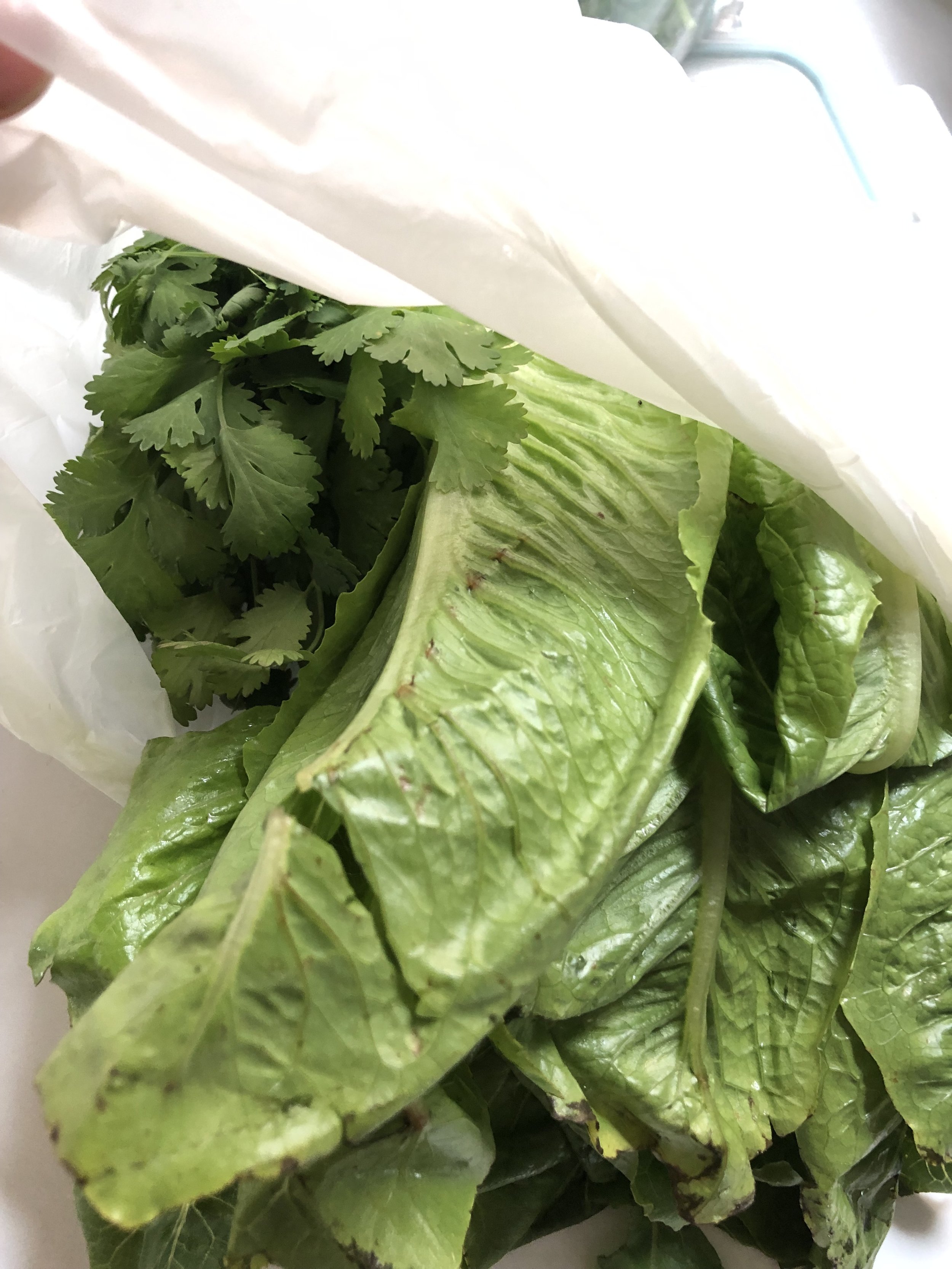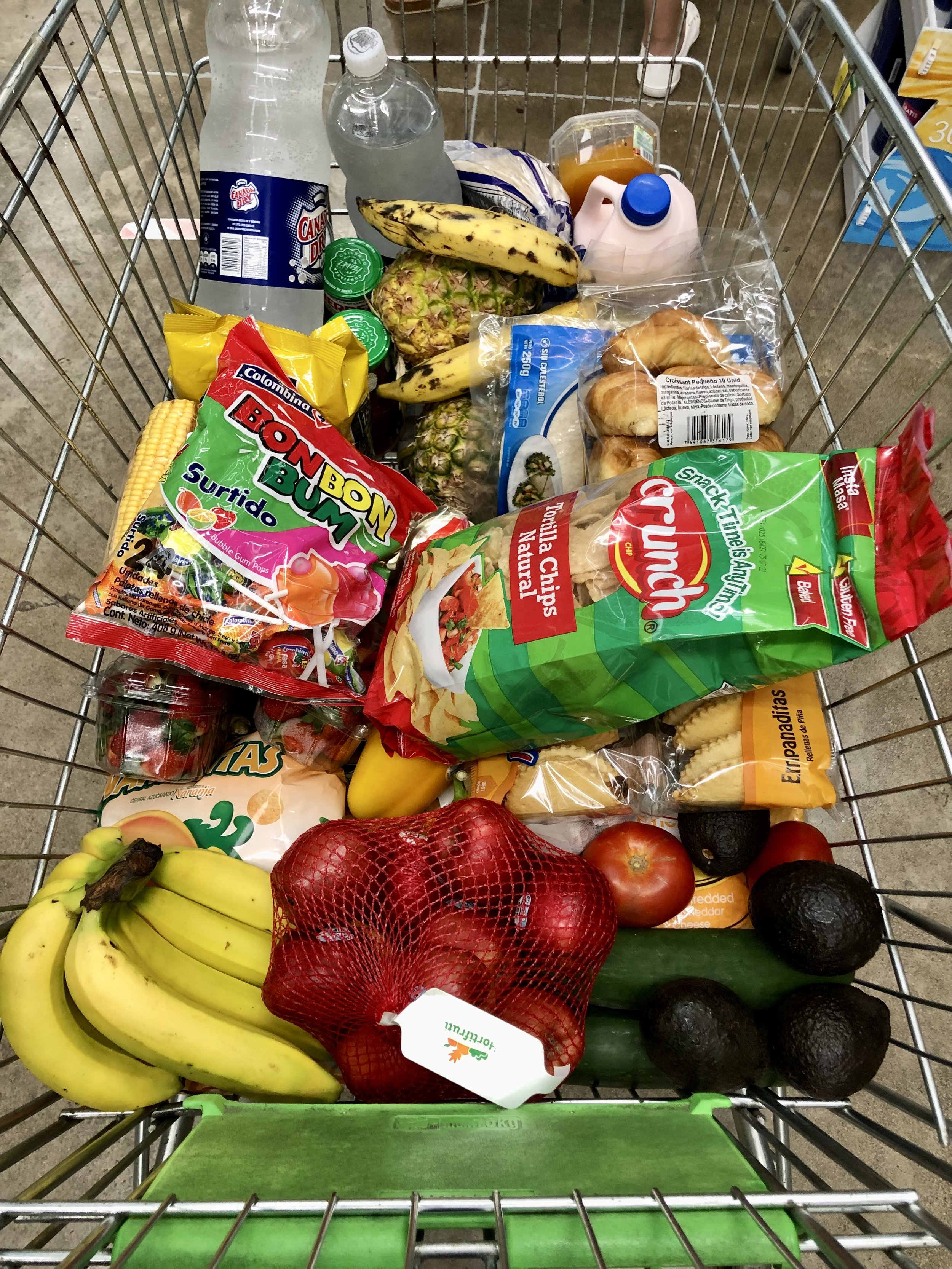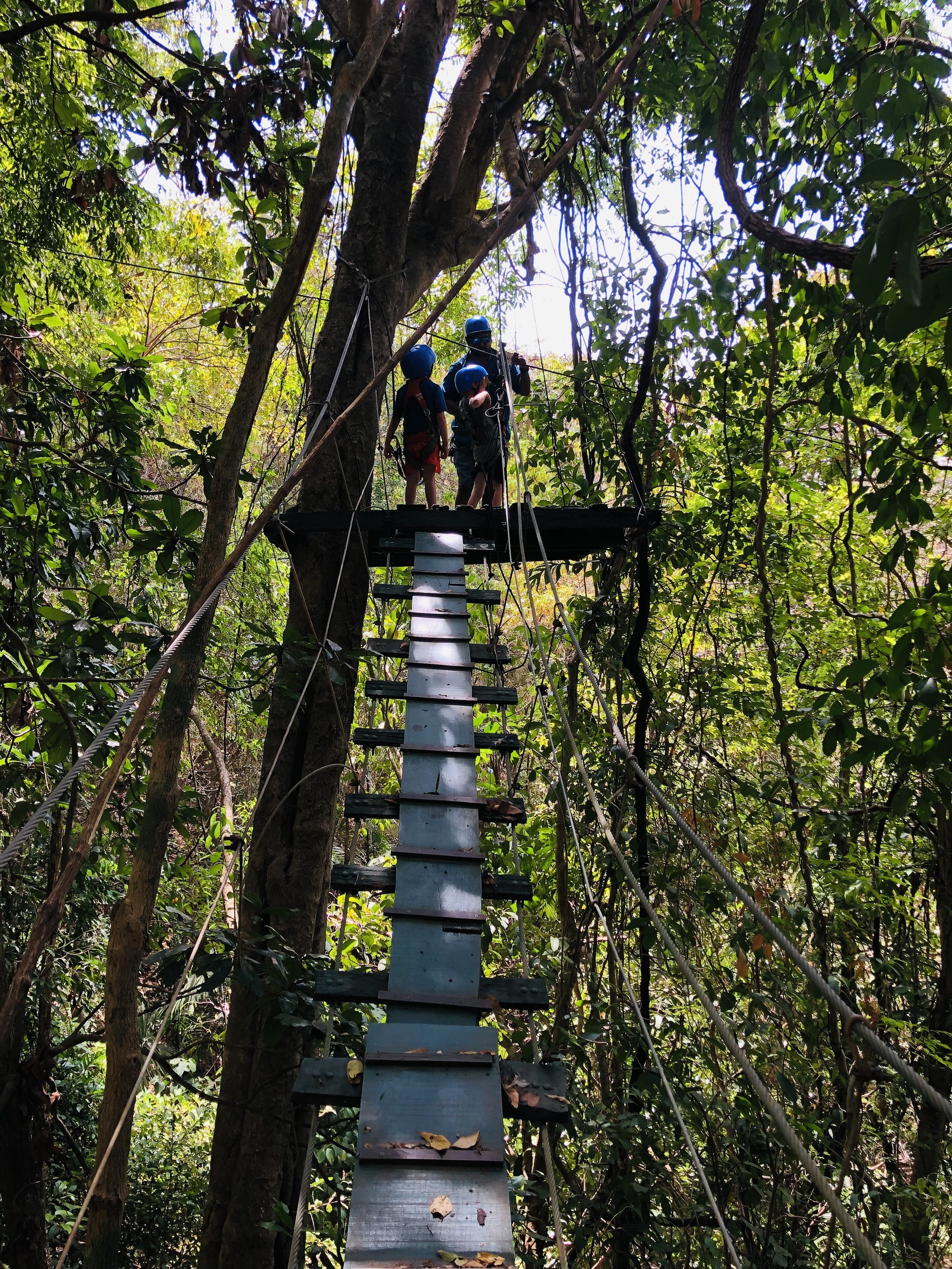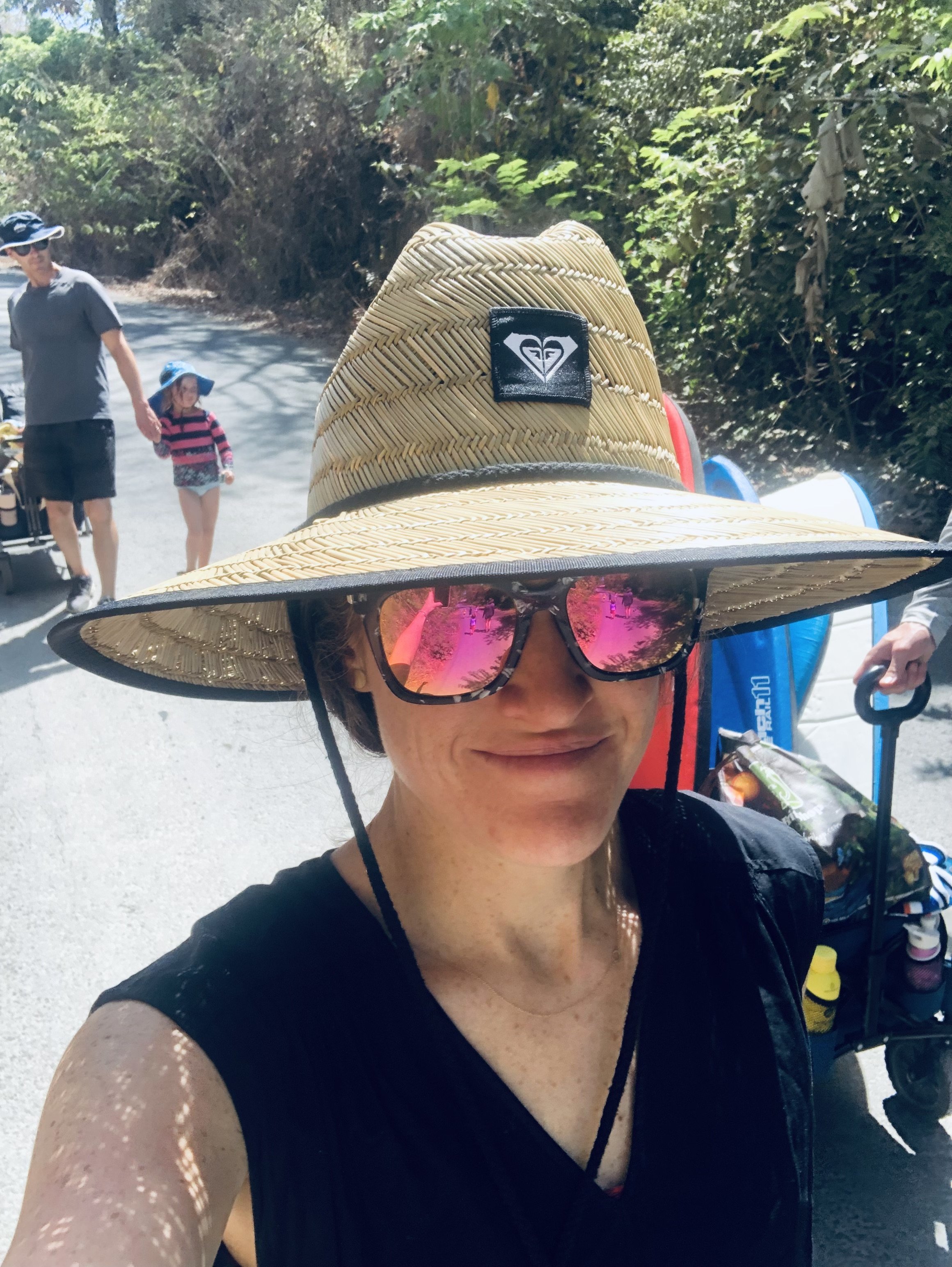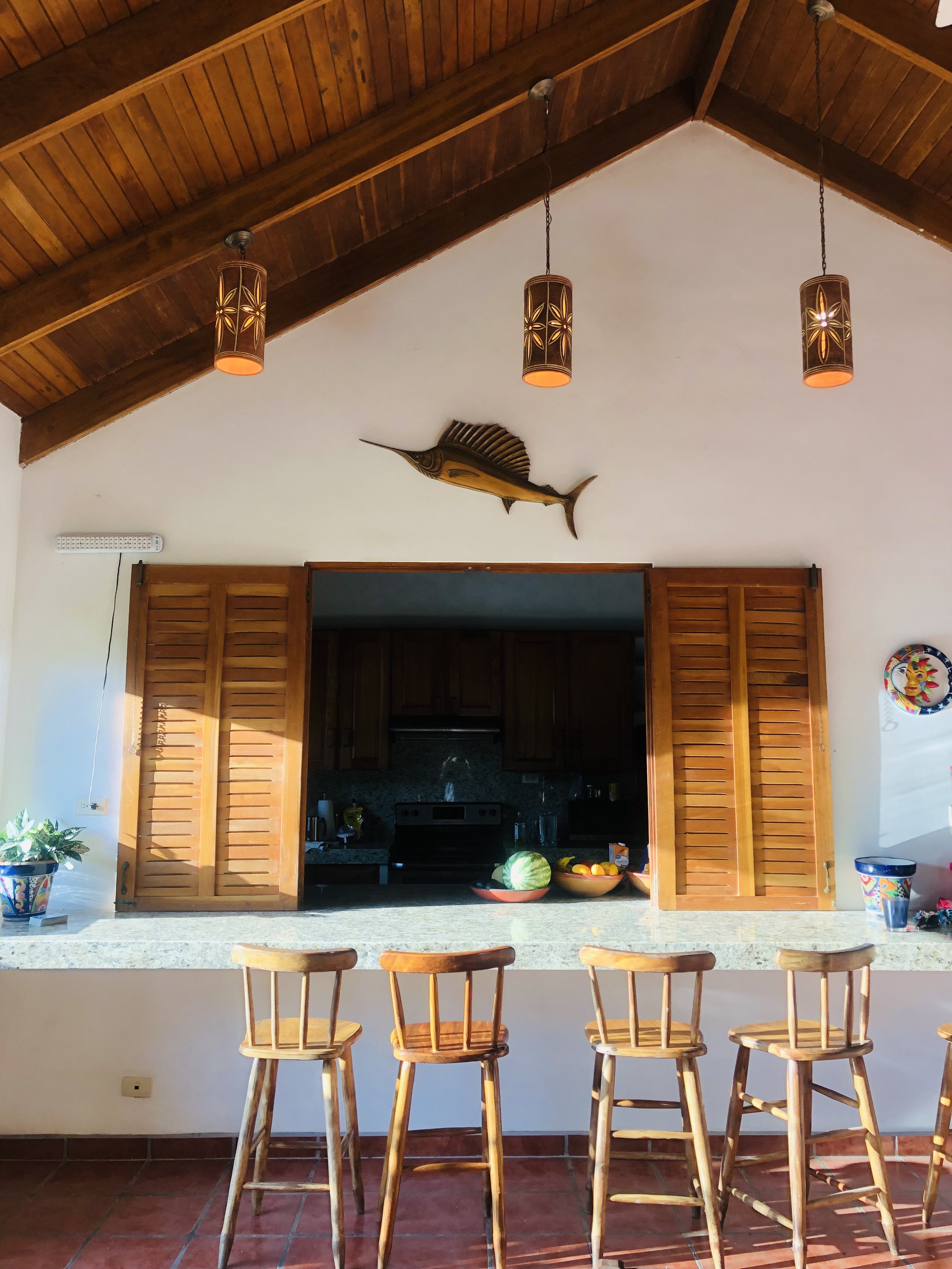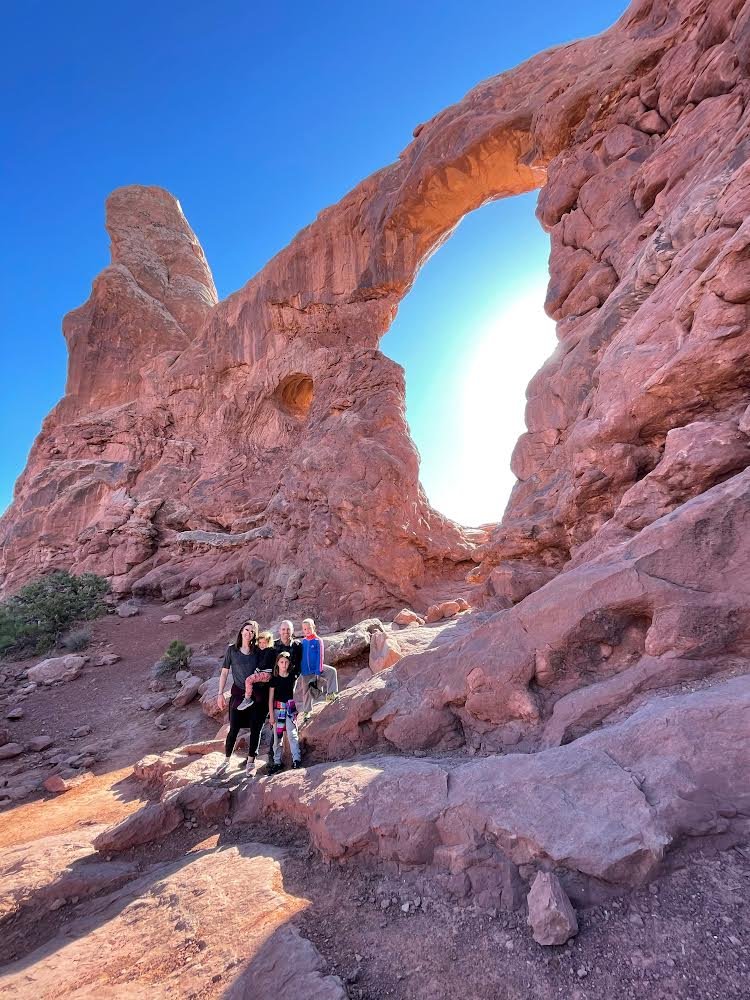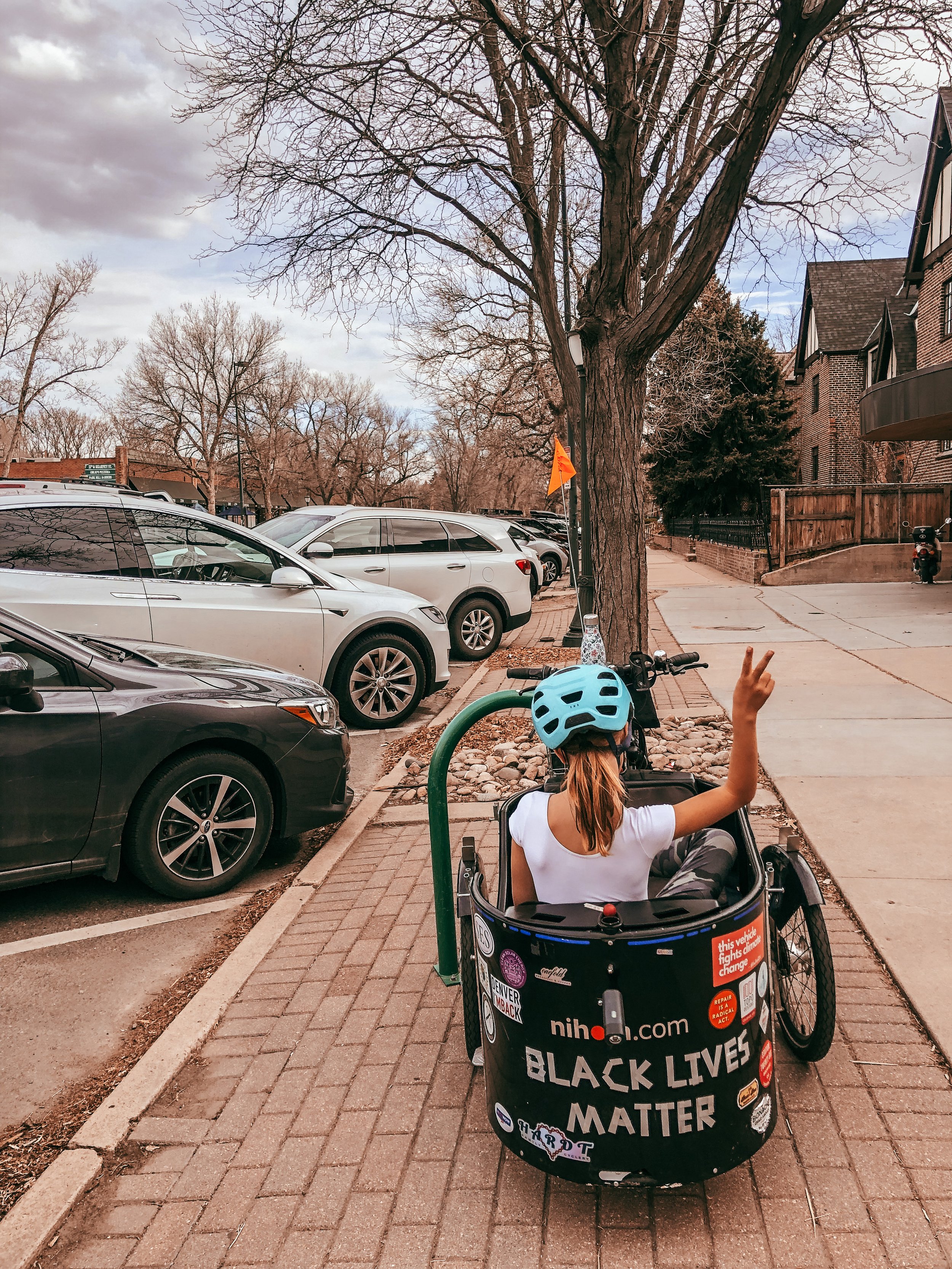We hit a pretty big milestone with the start of this school year: all three kids are now in school full time! Our littlest started kindergarten and our oldest started middle school. It's been exciting. And overwhelming.
For reasons not entirely in our control, the three kids ended up at three different schools. Two of the three schools are near each other geographically. The third is close to our house.
On the first day of school, I had Dan take the morning off, because I didn't know how else we could get all three to their schools. The second day, we drove. I drove the kids to school the whole first week, I think. But then, as I'm apt to do, I reconsidered: we could bike? Couldn't we?
Up until this year, our school commutes have been pretty short. We made decisions about schools to keep the kids within a mile or so of our house. We walked. We biked. We drove only when it was super snowy or we had to pick up a friend.
This year, other factors took priority, and the schools are farther away. But not that far. Like I said, one school is walkable, but the other two are about 3.5 miles from our house by bike. It takes about 20 minutes to ride. Doable, right? We've been training for this!
However, here's the issue: after we drop off at the school near our house, we have exactly 20 minutes to get to the other schools so the kids aren't late. It's tight. If we forget something, we'll be late. We feel rushed every morning. I hate rushing. My kids don't like it either. It's stressful for all of us.
I've spent a good amount of time whining about this situation. But whining doesn't solve anything. In terms of solutions, here's what I've come up with:
one. // Change schools. Not possible in the short term. Maybe possible in the longer term. TBD.
two. // Take the cargo bike more. My oldest, W, is a great bike rider. She's fast. She's aware of her surroundings. But I can still make faster time when she rides in our cargo trike and I'm the only one biking. We probably save 3-5 minutes with this option because I bike faster and no time has to be spent locking up her bike at school. She just jumps out.
three. // Drive more. I always say that driving is only 5-10 minutes faster than biking. Unfortunately, in this case, we need those 5-10 minutes. I know we'll be driving more in the winter months, so I'm trying not to drive for every school run right now. If there are 10 school runs each week, I'm currently driving for 3-4 of them. So biking 60-70% of the time. I'm happy with that. But I don't want it to be 100% of the time. That will make me feel like I've given up.
four. // Find more carpools. In my experience, carpooling with others works better in the afternoon. Mornings are hectic. It's hard to coordinate your family's timing with another family's. And with three kids, that's a lot of logistics...
four. // Have on of the two older kids go to school solo. This is on the horizon but I’m not sure we’re quite there. But going to continue to consider it.
five. // Move. Neighborhoods or to a city with school buses. I've heard that's a thing. It sounds glorious. Do your kids ride one? (We’re not moving.)
Before I conclude, it feels important to acknowledge how privileged I am to even have the time to do these school runs. It takes a total of 3 hours a day. This is a whole other issue that I might discuss another time: our transportation system is a policy failure.
One way or another, we'll figure it out. Mostly I just wanted to document and share the ways we're trying to continue to bike as our kids get older. It's hard. We live in a society where too many of us are rushing too much of the time, and we need cars to get us quickly from point A to point B. I don't like it, but I'm also realizing there's not much point fighting it. Or maybe, I fight it a little but not with my full force. I need to adapt some, too.
How about you? How's your school commute going? Are you walking or biking? Do you wish you could? Is your middle schooler going to school solo? I'd love to hear how other families are managing!

